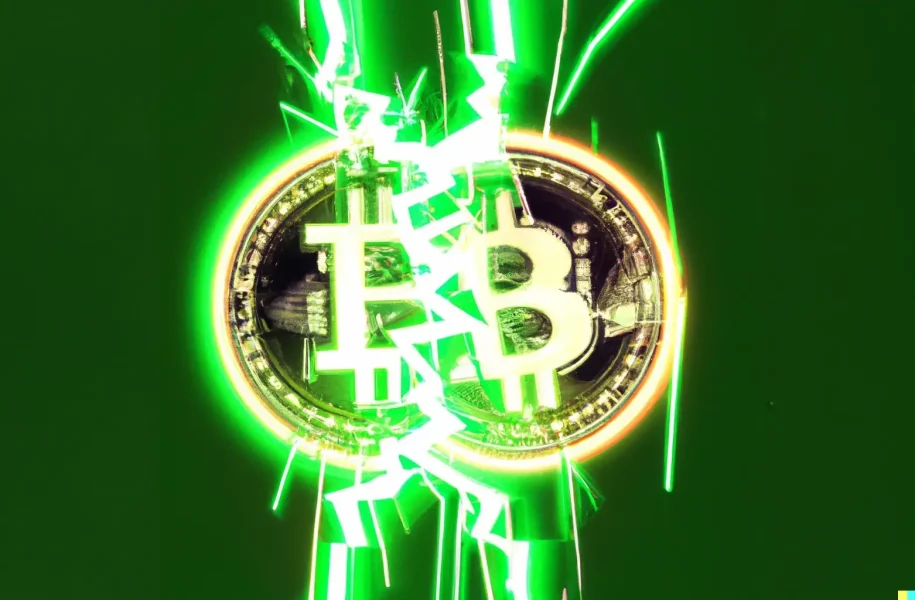Bitcoin Halving Explained

The Bitcoin halving is a planned event that occurs every 210,000 blocks, or roughly every four years. The purpose of the halving is to control the rate at which new coins are created and released into the economy.
When the halving occurs, the number of new BTC released with each block is cut in half.
This mechanism serves two primary purposes. First, it helps control the new Bitcoin supply and prevent inflation. By reducing the rate at which new coins are released into the economy, the halving helps ensure that each Bitcoin’s value remains stable over time.
The halving cycle
The halving is a vital aspect of the Bitcoin network’s design and is closely tied to how the network achieves consensus. The process of mining BTC requires a significant amount of computing power, and the reward for mining is designed to be both an incentive for miners to continue contributing their computing power to the network and a mechanism for releasing new Bitcoin into the economy. By reducing the mining reward every four years, the halving helps to ensure that the network remains secure and decentralized.
The event is built into the Bitcoin network’s rules and encoded in the underlying code. When a miner creates a new block, the code checks the total number of blocks that have been created, and if the number of blocks is equal to 210,000 multiplied by the number of previous halvings, the code reduces the block reward according to the rules of the halving.
When the halving occurs, the block reward that is paid to miners for creating a new block is reduced by half. For example, the block reward was 50 Bitcoin before the first halving. After the first halving, the block reward was reduced to 25 BTC. After the second halving, the block reward was reduced to 12.5 coins. And after the third halving, the block reward was decreased to 6.25.
The first halving occurred in November 2012 and reduced the block reward from 50 coins to 25. The second halving occurred in July 2016 and reduced the block reward from 25 Bitcoin to 12.5. The third halving was in May 2020 and reduced the block reward from 12.5 BTC to 6.25.
How does the halving affect the price?
The exact ways the halving can affect the price of Bitcoin are complex and need to be fully understood. However, here are some factors you can take into account:
Reduced supply: As mentioned earlier, the halving reduces the rate at which new coins are created and released into the economy. This means that the overall supply of Bitcoin will decrease over time, potentially leading to increased demand and a higher price.
Increased scarcity: The halving can also make BTC more scarce, as there will be a fixed and limited supply of 21 million. This increased scarcity could lead to increased demand and a higher price.
Increased awareness: The halving can also raise awareness of the largest cryptocurrency and its limited supply. This increased awareness can lead to more people buying Bitcoin, which can increase the price.
However, it’s important to note that the relationship between the halving and the price of BTC is complex and is not yet fully understood. A variety of factors determines the price of Bitcoin, and the halving is just one of many factors that can potentially affect the price.
Some potential weaknesses
As all things are, the halving could be better and may have some weaknesses. Here are a few of them:
Difficulty adjustments: The halving can potentially lead to sudden and significant changes in the mining difficulty, which can make it difficult for miners to adjust their operations. This could lead to a loss of mining power, making the network less secure.
Inflationary pressure: The event reduces the supply of new Bitcoin, potentially leading to increased demand and a higher price. However, if the price does not increase significantly, the reduced supply of new BTC could lead to deflationary pressure, which could undermine the currency’s value.
Incentive structure: The halving is designed to incentivize miners to continue contributing their computing power to the network. However, if the price of Bitcoin does not increase significantly after the halving, this could reduce the mining reward and make it less profitable for miners to continue mining. This could lead to a loss of mining power, making the network less secure.
What happens when there are no more Bitcoins to be mined?
When all 21 million BTC have been mined, the supply of new coins will be exhausted, and no further Bitcoins will be created. However, this will not happen for many years, as the last one is not expected to be mined until 2140.
When this happens, the supply will be fixed, and the only way to obtain new Bitcoin will be through transactions between existing holders. This could lead to increased demand for the existing supply and drive up the price.
However, it’s important to note that the network is designed to be flexible and adaptable, and there are potential changes that could be made to the network in the future to address the issue of the finite supply.
For example, the network could theoretically be modified to allow for the creation of new Bitcoin beyond the initial 21 million. It’s difficult to predict exactly what will happen when all 21 million have been mined, but the network is designed to adapt to changing circumstances.
What would happen if a large number of miners left the Bitcoin network?
If many miners leave the network, it could have several potential negative effects.
First, it could reduce the overall computing power, making the network less secure. This is because Bitcoin relies on the collective computing power of miners to maintain its security. If the amount of computing power were to decrease significantly, it could make the network more vulnerable to attacks.
Second, decreasing the number of miners on the network could reduce the number of transactions that can be processed, leading to delays and increased fees. This is because the amount of computing power available limits the number of transactions that can be processed on the network, so if there were a decrease, the network would be able to process fewer transactions, which could lead to delays and higher fees.
Finally, a decrease in the number of miners on the network could potentially lead to centralization, as a smaller number of miners would have a more significant share of the overall mining power. This could make the network less decentralized and potentially make it more vulnerable to attacks and other forms of manipulation.
Overall, if many miners left the Bitcoin network, it could negatively affect the network’s security, speed, and decentralization.
How would the Bitcoin network adjust to this?
If a large number of miners left the Bitcoin network, the network would adjust by automatically changing the mining difficulty to compensate for the loss of mining power. The mining difficulty is a measure of how difficult it is to find a new block and is adjusted periodically to ensure that the average time between new blocks remains constant.
In this scenario, the network would automatically adjust the mining difficulty to make it easier to find new blocks. This would ensure that the network continues to function smoothly.
However, it’s important to note that the network can compensate to an extent, but not wholly, for the loss of mining power. A significant decrease in the number of miners could still lead to delays in processing transactions and increased transaction fees. In addition, the network would still be at greater risk of attacks and could become more centralized if a small number of miners controlled a large share of the overall mining power.
In conclusion, if many miners dropped out, the network would adjust by automatically adjusting the mining difficulty. Still, there are scenarios where it would not be able to completely compensate for the loss of mining power, though they are doubtful.





